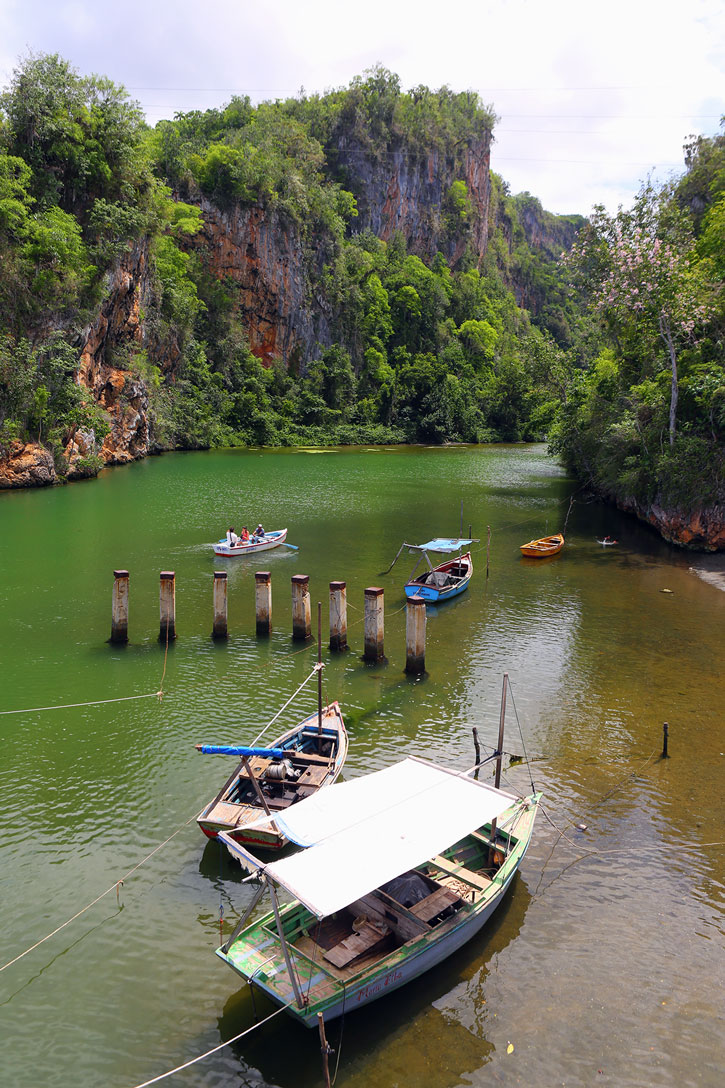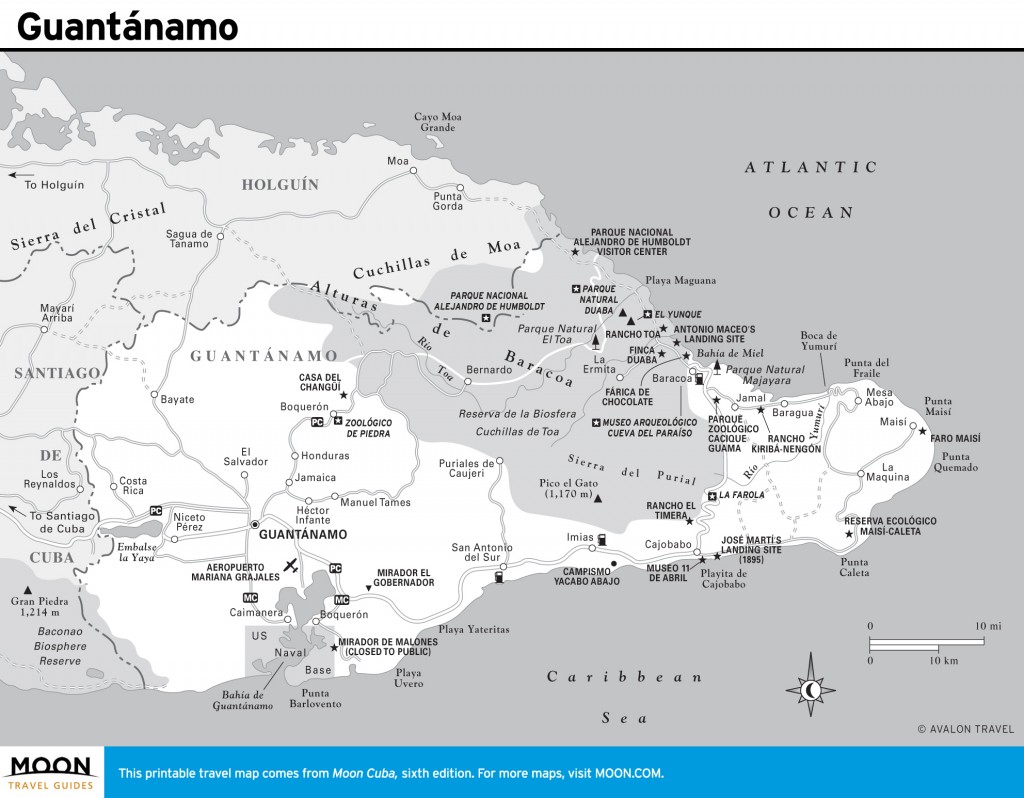Guantánamo. The name reverberates around the world. Everyone knows it as a U.S. naval base and a humiliating thorn in the side of Castro’s Cuba. In fact, Guantánamo is also both a city and province, which tapers eastward to Punta Maisí, the easternmost point of the island. The province is almost wholly mountainous. Except for a great scalloped bowl surrounding the town of Guantánamo, the uplands push up against a barren coastal plain.
[Baracoa] retains an aged colonial feel in a setting that any other city would die for.The wild eastern shore and secluded mountains offer fantastic opportunities for hiking. Uniquely, traces of indigenous culture linger around Baracoa, Cuba’s oldest city, near where a ball court similar to those of the Mayan culture has been discovered. Baracoans claim that Columbus first set foot in Cuba here and left a wooden cross (now on view in the town’s cathedral) as a memento. Whatever the truth, it’s undisputed that the Spanish conquistadores who came on Columbus’s heels established the first town in Cuba at Baracoa. The town retains an aged colonial feel in a setting that any other city would die for.
Excursion boats on Río Yumurí in Guantánamo province. Photo © Christopher P. Baker.
Today the mountain region is protected within a system of reserves slowly being developed for ecotourism. These mountains harbor rare plant and bird species and the Polymita pictas (snails that haul fabulously colored shells on their backs). The northeast coast and north-facing mountains are the rainiest region in Cuba. By contrast, valleys along the southern coast are pockets of aridity, and cacti grow in the lee of Cuba’s wettest slopes.
A single badly deteriorated road hugs the north coast, linking Holguín and Baracoa (public transport along this route is infrequent). For scenery, you should definitely plan on the Guantánamo city to Baracoa route via La Farola, a wheezing mountain switchback that has some nerve-wracking bends and slingshots you over the Sierra Cristal. The other option is the remote, arid, and dramatically scenic eastern shore route via La Maquina. Trains connect Guantánamo city to Santiago de Cuba and Havana. Víazul also offers daily bus service from Santiago de Cuba to Guantánamo and Baracoa.

Guantánamo
The town of Guantánamo is more a place to overnight in passing. However, it has a lovely colonial plaza, and the cultural and music scene is striking, with more traditional Afro-Cuban cultural centers than you can shake a stick at.
The hinterlands of Guantánamo township boast two sites of unique appeal. First, the U.S. naval base holds a fascination that many travelers can’t resist. While the chances of visiting the base are actually less than you winning the lottery, you can get to see it from the most unlikely place imaginable: a Cuban military lookout at Caimanera. You’ll need to set things up in advance, but the Cubans make it easy by offering prearranged tours handled through the Gaviota tour agency. Not to be missed is the Zoológico de Piedra. Within a one-hour drive of the city, this “stone zoo” features more than 200 life-size animals hewn from rock.
History buffs on the trail of José Martí should make a pilgrimage to Cajobabo, with its Museo Municipal 11 de Abril honoring Martí’s landing at nearby Playitas, where a clamber over beach boulders reveals a marble monument at the exact spot where the nationalist hero stepped ashore. You can take in both the stone zoo and Cajobabo in a drive between Guantánamo and Baracoa.
Baracoa deserves two days minimum. One day is more than sufficient for sightseeing, with the highlights being the Catedral Nuestra Señora de la Asunción and the not-to-miss Museo Arqueológico Cueva del Paraíso. The second day you’ll want to hike to the top of El Yunque, perhaps combined with horseback riding nearby or kayaking in search of manatees in Parque Nacional Alejandro de Humboldt.
Excerpted from the Sixth Edition of Moon Cuba.